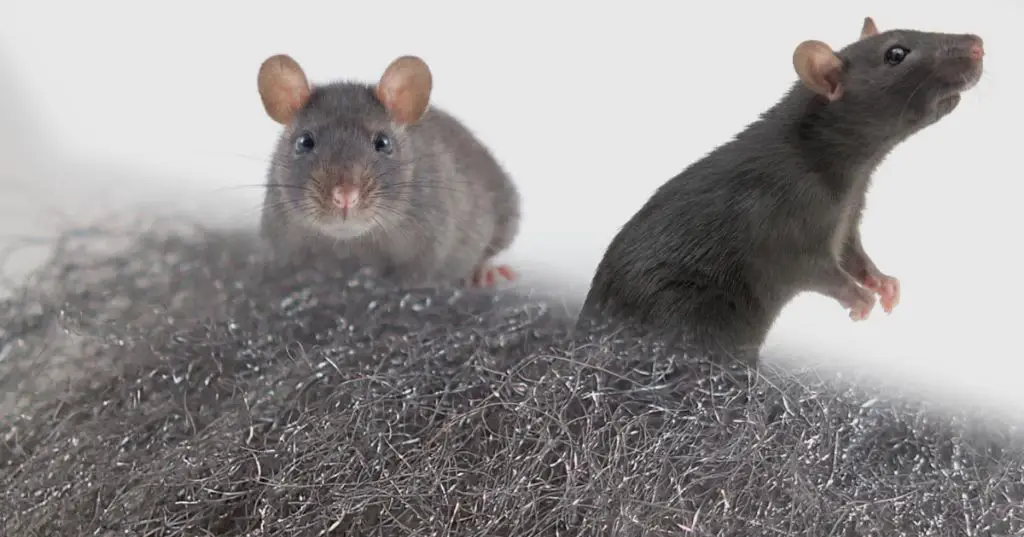Rats can be a major nuisance when they invade homes and buildings. They can cause damage by chewing through wood, drywall, electrical wires, and more. Rats also spread diseases and contaminate food sources. Keeping rats out of a home or building is crucial for health and safety reasons.
Page Contents
Why Use Steel Wool?
Steel wool is an effective tool for pest proofing against rats. The fine, sharp steel strands can deter rats from chewing and gnawing their way into a building. When stuffed into cracks, holes, and openings, steel wool provides a prickly barrier that rats don’t like to crawl across or through. It can block their entry points and prevent an infestation from getting established.
How Does Steel Wool Keep Rats Out?
Steel wool is an irritant to rats. When they encounter it, the fine sharp metal strands poke at their skin and paws. This causes discomfort and deters them from traveling over or through the steel wool. Rats may try to bite or chew through the steel wool at first, but eventually the irritation becomes too much and causes them to give up and look for easier access points elsewhere.
Steel wool also poses a risk of injury to rats. The fine strands can become lodged in their mouths or paws, or even puncture their skin if enough pressure is applied. Avoiding injury is a strong instinctual drive for rodents, so steel wool effectively leverages this drive to repel them.
Using Steel Wool to Block Entry Points
Steel wool can be used to block any small openings that allow rats to get into a building or room. Common entry points include:
- Cracks and holes in foundations
- Around pipes, utilities, and wiring
- Under doors
- Attic soffits and vents
- Around chimneys and flues
- Basement window wells
- Gaps in siding
Stuffing steel wool into these openings blocks rats physically while the fine sharp strands deter them from attempting to chew through. Expandable foam or caulk can be applied over the steel wool to hold it in place.
Choosing the Right Grade of Steel Wool
Steel wool comes in a variety of grades from extra fine #0000 to very coarse #4. For keeping rats out, a medium grade such as #1 or #2 works best. The finer steel wool grades may not have sturdy enough strands to irritate rats and block their gnawing. Coarser grades leave more space between strands that rats can potentially crawl through. #1 or #2 steel wool offers a balance of strength, sharpness, and density optimal for rat exclusion.
| Steel Wool Grade | Strand Thickness | Rat Exclusion Ability |
|---|---|---|
| #0000 | 0.006 inches | Not recommended – too fine and weak |
| #000 | 0.0070 inches | Marginal – fibers may be too thin |
| #00 | 0.010 inches | Fair – moderate strength and thickness |
| #0 | 0.012 inches | Good – thicker fibers resist gnawing |
| #1 | 0.016 inches | Excellent – dense fibers irritate rats |
| #2 | 0.018 inches | Excellent – extremely effective for exclusion |
| #3 | 0.024 inches | Fair – coarser fibers may allow gnawing |
| #4 | 0.030 inches | Not recommended – too spaced apart |
Ensuring Proper Use of Steel Wool for Rat Exclusion
To get the best results from steel wool for keeping rats out, it is important to use the technique properly:
- Always choose grade #1 or #2 steel wool
- Tightly pack the steel wool into any openings leaving no gaps
- Wear gloves and eye protection since the strands are sharp
- Use expanding foam or caulk over the steel wool to hold it in place
- Inspect regularly for any areas where rats may be attempting to gnaw through
- Replace the steel wool as needed to block re-entry points
Precautions When Using Steel Wool
Steel wool is an irritant and can cause minor skin and eye injuries. Gloves, long sleeves, and eye protection should always be worn when handling it. The fine sharp metal strands can also increase risk of tetanus infection in open wounds. Be sure any openings packed with steel wool are fully sealed to reduce this risk.
Alternative Options for Blocking Rats
While steel wool is highly effective for blocking rats, some other options include:
Copper Mesh
Like steel wool, copper mesh poses a risk of injury to rats if they try to chew through it. Copper also deters rats due to their strong aversion to the smell.
Expanding Foam
Applying expanding foam into openings can block rats physically. Look for foam with a coarse texture to deter gnawing and chewing.
Concrete Mortar
Plugging openings with concrete mortar or cement creates a very durable seal. Be sure to allow proper curing time before expecting full effectiveness.
Hardware Cloth
Hardware cloth is a galvanized wire mesh that can be used to cover vents, soffits, window wells, or other openings. The dense mesh is too small for rats squeeze through.
Conclusion
Steel wool in grade #1 or #2 is an affordable and highly effective option for keeping rats out of homes and buildings. The irritating fine metal strands deter rats from gnawing and crawling through areas packed with steel wool. When properly placed in all entry points, steel wool can block rats and prevent infestations from becoming established indoors.
